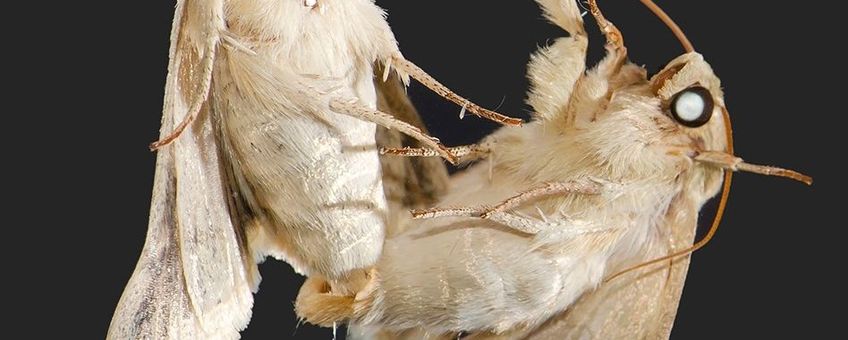
Male moths get part of their sex pheromone from plants
Institute for Biodiversity and Ecosystem Dynamics (IBED)Scent compounds are essential for male moths to entice female conspecifics to mate. Both partners need to find and recognize each other in the dark. This is done by sex pheromones secreted by the female. Then it is up to the male to convince the female that he is a good match.
Aphrodisiac from plants
The study, that appeared in the scientific magazine Current Biology on 1 August, shows that male Chloridea virescens moths get one key ingredient of their aphrodisiac from plants: when they eat from a plant, it secretes the signalling substance methyl salicylate, for healing and as a cry for help to the moths' enemies. Male moths appear to be able to incorporate this substance into their pheromone mixture, as caterpillars when eating plants or as adults when drinking nectar.
"It is a new discovery that the courtship pheromone of this moth contains substances from plants," says Astrid Groot, researcher at the Institute for Biodiversity and Ecosystem Dynamics (IBED) at the University of Amsterdam. "Until now, we thought that this and related moths produce their sex pheromone substances de novo." And whether it is because the substance proves to a female that the male is capable of ingesting the plant's defence substance, or that he has a good foraging ability as an adult, in any case, the ingestion increases the mating chances of males. Groot: "It was surprising to find methyl salicylate in the pheromone cocktails of male moths. Perhaps males could have developed this sexual signal through evolution because females could already perceive the substance."
Specific receptors in females
 The composition of the sex pheromone of male moths was first characterized almost 35 years ago. As chemical analysis techniques have become much more sensitive in recent decades, the scientists now studied the male pheromone using the technique of gas chromatography. In the process, they discovered some chemical compounds that were not found before. Including methyl salicylate, whose importance was further investigated via lab experiments.
The composition of the sex pheromone of male moths was first characterized almost 35 years ago. As chemical analysis techniques have become much more sensitive in recent decades, the scientists now studied the male pheromone using the technique of gas chromatography. In the process, they discovered some chemical compounds that were not found before. Including methyl salicylate, whose importance was further investigated via lab experiments.
By measuring changes in electrical charge on the antennae of female moths, the researchers could see that methyl salicylate, which was barely detectable in gas chromatography studies, elicits a large response in females. Female moth antennae have two smell receptors specifically tuned to methyl salicylate, allowing them to recognize the chemical in the mixture emitted by males.
The researchers were also able to reduce the amount of methyl salicylate secreted by males and they showed that mating success suffered as a result. When the males were administered methyl salicylate, their mating success returned to normal: evidence of the chemical's aphrodisiac-like quality.
Storage in the hair pencils
The researchers additionally compared wild moths with specimens from the lab. Male moths caught in soybean fields in North Carolina had large amounts of methyl salicylate in their hair pencils - the male organs that secrete the pheromone mixture.
The researchers reduced the amounts of methyl salicylate in moths fed an artificial diet in the laboratory. When the substance was added to the diet of these male lab moths via nectar-like sugar water, they stored it in their hair pencils. After they were encouraged to court females, methyl salicylate disappeared from the hair pencils again as males used it in their pheromone cocktail.
Text: Institute for Biodiversity and Ecosystem Dynamics (IBED)
Image: Jan van Arkel
